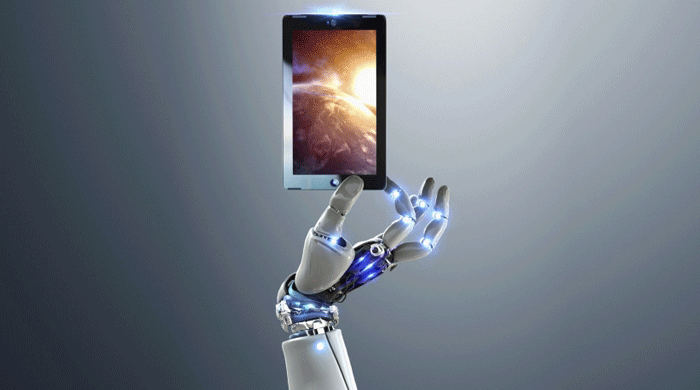The value of data is contingent on how it can impact the entity using it.
From the outsource!
In the 2014 best seller, “The Second Machine Age,” Erik Brynjolfsson and Andrew McAfee argue that this information era will leverage software-driven machines to substitute and replace humans. At the center of that debate is the question of data and how powerful it can become. After all, the more that machines can know and learn, the more intelligent they will become.
Throughout the industrial revolution over a century ago, industrious people found ways to make new and more valuable jobs as labor-heavy duties were replaced by machines. The same is happening in today’s economy. A key development has been to better organize data to serve human demands, commonly known as smart data.
So what does this mean for companies that want to evolve with the times and leverage smart data? Matiss Ansviesulis, CEO of Creamfinance — Europe’s fastest growing Fintech Company — recently gave me a rundown on how smart data will manipulate the future of big data:
1. Lessen risk of data leakage.
Smart Data will push the methodology of big data. You can see it in the already apparent obsolescence of social media data sets.
“Using information from social media, on which big data supporters rely, can bring negative consequences due to personal data leakage, which the customer may not be fully aware of,” explains Ansviesulis.
Companies that use the big data approach collect a variety of personal data from social platforms. Thus, in the case of data loss, huge volumes of customer data can be made public. Far from being hypothetical, this scenario has played out time and again in recent years and is a compelling reason to approach data acquisition differently.
2. Value add.
Collecting a ton of unstructured data has zero value. Collecting structured, smart data is extremely valuable because it follows patterns and creates predictability. In other words, big data aggregates information, smart data creates data points for decision-making.
It is not just about looking at terabytes of info; it is about making it useful.
“Smart data is actionable data that is available real-time and is actionable. When I say actionable, I mean a couple of different things, such as data accessibility, quality, accuracy, liquidity, and organization. With rapidly changing business dynamics and decisions, availability of real-life data is crucial, as it translates into smooth decision making for the company and a rapid service for the customer,” says Ansviesulis. “In the world of finance, the biggest difference is reflected in risk management and speed of service. Non-bank lenders like Creamfinance use more standardized electronic information, which results in speedy transactions.”
3. Capitalizing on behaviors.
Smart data uses behaviors to create more comprehensive and insightful decisions based on real-time, changeable and interactive data.
Consumers want immediate results, a trend that is bleeding into all sectors of the economy including finance. Customers are no longer willing to wait, they expect to log on (usually via a mobile device) and resolve problems instantly. Companies that create a fluid and constantly improving service will find the most success. Ansviesulis explains that once the customer is online, it is possible to acquire a lot of valuable behavioral data, which is processed and analyzed in real time. By analyzing online behavior, businesses have a far better understanding of their customers and how to serve them.
4. Efficiency.
By identifying statistical patterns in online data and combining credit intelligence and application data from traditional sources, non-bank lending companies can utilize the most advanced scoring techniques on the market.
Smart data allows companies to make rational, data-driven decisions because they are able to collect the right metrics to analyze. According to Ansviesulis, the whole purpose of smart data is to get rid of unnecessary information. “The purpose of the smart data approach is to eliminate so-called ‘noise’ and focus on necessary, value-adding data points that are crucial for decision-making. When it comes to lending, that is imperative.”
5. Minimize expected loss.
Enterprises are constantly assessing risk. With a self-learning technology, the company becomes smarter as a whole and there is less risk associated. Smart data allows the business, in this case, the lender, to better evaluate the consumer to measure expected success or failure rate and predict future behaviors.
The value of data is contingent on how it can impact the entity using it.
“Taking the smart data route is more economical due to the need for smaller amounts of data. Every company is interested in cost-cutting, and when your data can affect your budgeting positively that’s yet another, if not the most important, advantage.”



